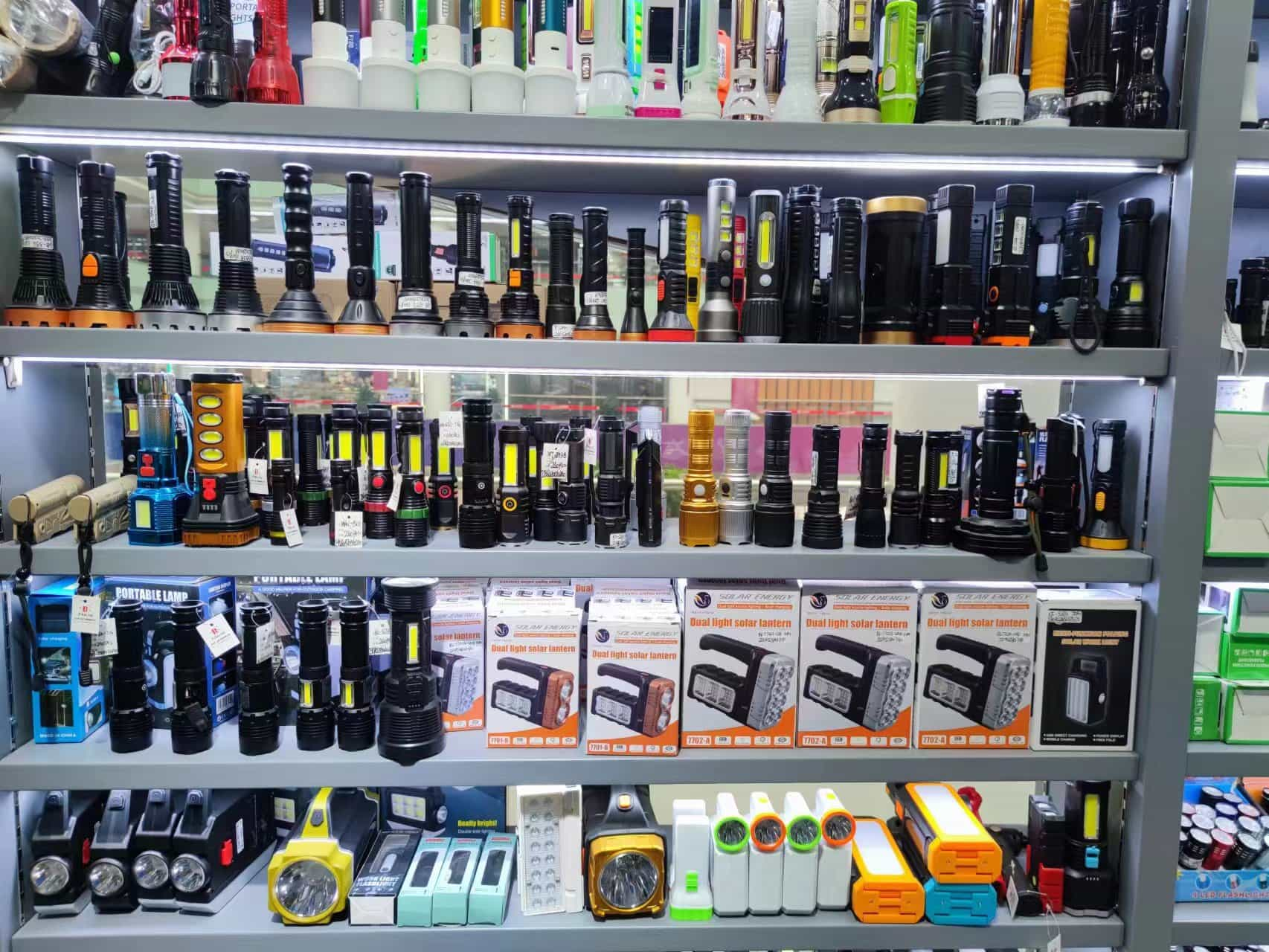What Makes a Household Flashlight Blackout-Ready

When the power goes out, you don’t want to panic. A good household flashlight can really help during blackouts. It’s not just about owning any flashlight—it should be for emergencies. Look for one with strong brightness, long battery life, and toughness. These features help you stay prepared for sudden power outages. In Europe, where homes are often small, the right flashlight is very important. Are you ready for the next power outage?
Key Takeaways
Choose a flashlight with at least 200 lumens for bright light during blackouts. This brightness helps you navigate safely in the dark.
Look for a flashlight with a battery life of 8 to 10 hours. Consider rechargeable options to save money and reduce waste.
Select a durable flashlight that is waterproof and shock-resistant. This ensures it will work in tough conditions and last longer.
Keep extra batteries and a portable charger handy. This prepares you for unexpected long outages.
Store your flashlight in an easy-to-find location. This way, you can grab it quickly when the power goes out.
Key Features of a Blackout-Ready Household Flashlight
Brightness and Beam Distance
When the power is out, you need a bright flashlight. Brightness is measured in lumens, which shows how much light it gives. For blackouts, pick one with at least 200 lumens. This amount of light helps you move safely or light up a small space.
Beam distance is also important. It shows how far the light can shine. A flashlight with a beam distance of 100 meters or more works well in emergencies. It helps you spot objects, find things, or signal for help. Some flashlights let you switch between wide and focused beams. This feature is very useful during blackouts.
Tip: Choose flashlights with different brightness levels. They save battery when full brightness isn’t needed.
Battery Life and Power Options
A flashlight is only helpful if its battery lasts long. During blackouts, you don’t want it to stop working quickly. Pick one that lasts 8 to 10 hours on one charge or set of batteries. Some flashlights have low-power modes to make them last longer.
Think about power options too. Rechargeable flashlights are better for the environment and save money. You can charge them with solar panels, USB ports, or hand cranks. Flashlights with disposable batteries are good for storage since they keep their charge.
Note: Always have extra batteries or a portable charger ready. You can’t predict how long a blackout will last.
Durability and Weather Resistance
Your flashlight should handle tough situations. Pick one that is strong, waterproof, and shock-resistant. This way, it won’t break if dropped or exposed to water.
Here’s why durability is key:
Feature | Why It Matters |
|---|---|
Durability | Strong, waterproof, and shockproof for emergencies. |
Portability | Small and light flashlights are easy to carry. |
Power Outages | Provides light when the power is out. |
Water resistance is very important. Whether it’s raining or there’s a plumbing issue, your flashlight should still work. Look for an IPX4 rating or higher. These flashlights can handle splashes, rain, or short dips in water.
Pro Tip: If you live in a flood area, get a floating flashlight. It’s easier to grab if it falls in water.
Types of Flashlights for Power Outages
When the power goes out, the right flashlight is very helpful. Not all flashlights are the same, and each type has its own use. Let’s look at three common types to help you choose the best one.
Handheld Flashlights
Handheld flashlights are the most popular choice for homes. They are small, simple to use, and very handy. You can grab one quickly to move around in the dark or check things at home.
Why handheld flashlights are a good pick:
Portability: Small enough to carry or keep in a drawer.
Variety: Some have adjustable brightness, beam settings, or rechargeable batteries.
Ease of Use: Just turn it on and use—no setup needed.
Some handheld flashlights also have extras like magnetic bases or wrist straps. These features make them even more useful during blackouts. If you want a dependable option, this is a great choice.
Tip: Keep a handheld flashlight in every main room. This way, you won’t need to search for one in the dark.
Headlamps
Need light but want your hands free? Headlamps are perfect for that. These flashlights strap to your head and shine light where you look. They’re great for fixing things, cooking, or reading during a blackout.
What makes headlamps special:
Hands-Free Operation: You can work without holding a flashlight.
Adjustable Angles: Many let you tilt the light to specific spots.
Lightweight Design: Comfortable to wear for long periods.
Headlamps are very helpful if you live in rural areas or face frequent outages. They’re also great for camping or hiking, making them a useful tool for emergencies.
Pro Tip: Pick a headlamp with a red light mode. It saves battery and keeps your night vision.
Lanterns
Lanterns are best for lighting up big spaces during blackouts. Unlike handheld flashlights or headlamps, lanterns shine light in all directions. They’re great for family rooms, kitchens, or outdoor areas.
Why lanterns are worth considering:
Wide Coverage: They light up a whole room for everyone.
Long Battery Life: Many last hours, even on high brightness.
Sturdy Build: Most are tough enough to handle drops or rain.
Some lanterns also have extras like USB ports to charge devices or solar panels for eco-friendly power. They’re perfect for long outages when you need steady light.
Note: Get collapsible lanterns if you have little storage space. They’re easy to store when not in use.
Additional Considerations for European Households
Rechargeable vs. Disposable Batteries
Picking the right batteries is important during a blackout. Rechargeable batteries save money and create less waste. You can charge them with USB ports, solar panels, or hand cranks. They are great for families wanting an eco-friendly choice.
Disposable batteries, however, are better for long-term storage. They keep their charge for years, making them reliable in emergencies. If you rarely use your flashlight, store some disposable batteries in your emergency kit.
Tip: Have both rechargeable and disposable batteries at home. This ensures you’re ready for any situation.
Compact and Lightweight Designs for Small Spaces
Many European homes have little storage space. A small flashlight is very useful. Choose one that fits in a drawer or hangs on a wall. Lightweight flashlights are easier to carry, especially during emergencies.
Some flashlights fold or collapse to save even more space. These are ideal for apartments or homes with limited room.
Pro Tip: Keep a flashlight on your keychain or in your car. You’ll always have light when needed.
Eco-Friendly and Solar-Powered Options
Solar-powered flashlights are a smart, sustainable choice. They charge during the day and provide light at night. These are perfect for areas with frequent outages or for reducing your carbon footprint.
Some eco-friendly flashlights also have hand-crank charging. This feature ensures you’ll have power even without sunlight. It’s also a fun way to teach kids about renewable energy!
Note: Solar flashlights work best when fully charged. Place them near sunlight during the day to keep them ready.
Essential Accessories for Emergency Flashlight Preparedness
Spare Batteries and Chargers
During a blackout, your flashlight needs a reliable power source. Always keep extra batteries and chargers nearby. Rechargeable batteries are great for daily use, but disposable batteries are better for long emergencies. They can stay charged for years, making them ideal for emergency kits.
A portable charger or power bank is also helpful. It can recharge your flashlight, phone, or radio during long outages. Solar-powered chargers are a smart choice too. They’re eco-friendly and work when other power options fail.
Tip: Store extra batteries in a cool, dry spot. This keeps them ready to use when needed.
Mounts and Clips for Hands-Free Use
Fixing something or finding items in the dark is hard if you’re holding a flashlight. Mounts and clips solve this problem. They let you attach your flashlight to walls, tables, or clothes, freeing your hands.
Headlamp mounts are very useful. They give focused light for tasks like organizing supplies or checking medicines. Magnetic clips are another option. They stick to metal surfaces, making them great for kitchens or garages.
Pro Tip: Choose mounts that adjust easily. This helps aim the light exactly where you need it.
Storage Tips for Easy Access During Blackouts
When the power goes out, you don’t want to search for your flashlight. Keep it in a set place, like a drawer or wall holder. Make sure it’s easy to find, even in the dark.
If you have an emergency bag, include a flashlight with other items like a radio, blankets, and a first aid kit. For bigger homes, place flashlights in several rooms for quick access.
Note: Test your flashlights often. Replace old batteries and check for damage to keep them ready.
A blackout-ready flashlight isn’t just a tool; it’s peace of mind during emergencies. You need one that’s bright, lasts long, and can handle tough conditions. These features make sure you’re prepared when the lights go out.
Accessories like spare batteries and mounts add even more value. They keep your flashlight ready and easy to use. Thoughtful storage ensures you can grab it quickly when needed.
Take a moment to think about your household’s needs. Investing in a reliable flashlight now means you’ll be ready for whatever comes your way.
Reminder: Don’t wait for the next blackout to prepare. Choose a flashlight that fits your lifestyle today!
FAQ
What should I pack in a 3-day blackout kit?
Include a flashlight, extra batteries, and a battery-powered radio. Add non-perishable food, clean water, and a first aid kit. Don’t forget communication tools and a way to purify water. These items help you stay safe during long power outages.
Tip: Store your kit where it’s easy to grab quickly.
How do I keep my flashlight ready for emergencies?
Keep it in one spot and check it every month. Replace weak batteries and test how bright it is. For rechargeable flashlights, make sure they’re fully charged. A portable charger can recharge it during long blackouts.
Are solar-powered flashlights good for blackouts?
Yes, if they’re charged ahead of time. Leave them in sunlight daily to keep them ready. They’re eco-friendly and great for areas with frequent outages. Use other flashlights as backups for cloudy days.
Why is a battery-powered radio useful during blackouts?
It gives updates on weather, news, and emergency alerts. Radios don’t need the internet or electricity, so they’re reliable. They’re a must-have during long power outages.
How can I make my flashlight last longer in a blackout?
Use flashlights with brightness settings. Switch to low-power modes to save energy. Keep extra batteries or a solar charger nearby. This helps your flashlight work longer during extended outages.
See Also
A Homeowner's Guide to Selecting the Ideal Emergency Flashlight
Our Emergency Flashlight: Designed for Long-Lasting Durability
Key Maintenance Tips to Keep Your Flashlight Functional
